How Eiji Aonuma & Yoshiaki Koizumi Changed Zelda’s Future
Prelude
In replaying Majora’s Mask for its 20th anniversary, I wanted to make this retrospective into something more than just “Hey, Zelda fans, remember this game that we talk about all the time? It’s 20 years old now!” In doing so, I was trying to find new subtexts, and reasons to continue picking it apart, quickly realizing that this particular Zelda title has reflected so much of what the players want to see in it over the years, but not very often considered the people behind the game’s code. We’ve spent years dissecting its themes, but we often forget how it may reflect its two lead directors: Eiji Aonuma and Yoshiaki Koizumi. For the countless articles on Majora’s Mask out there that dig into its motifs, story beats, characters, color pallets, and remake changes, there is a deep, human connection to the player coming from this game more than any other first-party Nintendo title. When we consider this game’s directors, we see their ambitions to try something new and having the courage to make it weird. As a result, this piece has taken the form of observing their influences on the final product and seeing how their drive for staying creative made one of the most ambitious and experimental action RPGs of its era, and where it got them today.
Firstly, I think it’s important to address the work of the late Satoru Iwata, the iconic president of Nintendo with a heart of gold who tragically passed in 2015. He was a man far ahead of his time, but in my research for this piece, I have developed a new layer of love for his timeless Iwata Asks interviews. For a company as elusive and secretive as Nintendo, Iwata was always trying to pull the curtain back to let fans in on their conversations. If you didn’t follow them as they were being published in the early 2010s, I hope you seek them out to read about your favorite games, because I believe they create a beautiful capsule of the legacy in these last 20 years of Nintendo. I think it’d be nice to know the people who make the games we love a little better, and see how pieces of their souls find their way into this software that we connect with, especially in something as inherently spiritual as Zelda. So that’s what this article is about, and it wouldn’t exist the way it does if not for the incredible depth of resources at DidYouKnowGaming. Their work of archiving articles and interviews across the internet on beloved games in an accessible way for people to start making their own findings is an immeasurable resource in an era where retaining media literacy is an important thing to retain in gaming culture.
Legend

“The flow of time is always cruel… Its speed seems different for each person, but no one can change it… A thing that doesn’t change with time is a memory of younger days…”
– Sheik teaches the Minuet of Forest in The Legend of Zelda: Ocarina of Time
Humans are infinitely obsessed with time. Obsessed with optimizing it, remembering it, and tracking how much of it we’ve lost. Looking back and forward, our minds become lost in a spiral of what has become or what could be, whilst our bodies stay grafted to the present. Some spend most of their lives in this hypnotic state. Time is the only thing truly out of a person’s control. Even if our emotional states, proficiencies, and relationships cause our experience of it to ebb and flow, time marches on despite us.
This is the curse of having a childhood with The Legend of Zelda: Ocarina of Time at your side. The Nintendo 64 gave players one of the most revolutionary experiences in a 3D video game, and echoes of its final product can still be seen in almost every 3D action RPG today. Ocarina of Time is still lauded by many as “the greatest game of all time.” The semantics of this could be argued for its blueprinting the direction of the industry, its ubiquitous fantasy adventure, or our rose-tinted glasses, but its shadow is undoubtedly large. When Eiji Aonuma was asked to make a follow up to one of the most successful games of the 1990s, maybe ever, he gambled away his time to get it done in order to stoke the fires of creativity. At the time, a direct sequel to a Zelda game was unheard of, but he and the Zelda team were brave enough to give it a try, albeit with pressure to turn some quick extra profit with the success of Ocarina.
From a fan’s perspective, it’s easy to lose sight of the fact that the greatest enjoyment of Majora’s Mask comes from experiencing Ocarina’s legendary adventure first. Its jarring nature is made only more complex when gameplay, visuals, songs, and details are stripped from Ocarina’s legend and distorted into something completely new. Majora’s Mask, compared to its predecessor, was born of a need for simplicity, efficiency, and strong time management. When discussing the original game upon the release of 2015’s The Legend of Zelda Majora’s Mask 3D, a remake for the Nintendo 3DS, Aonuma considered Majora’s original version a literal challenge to returning and devoted players, especially in regards to the lack of tutorials for the basics of platforming, puzzles, and combat, thrusting players into the new scenario.
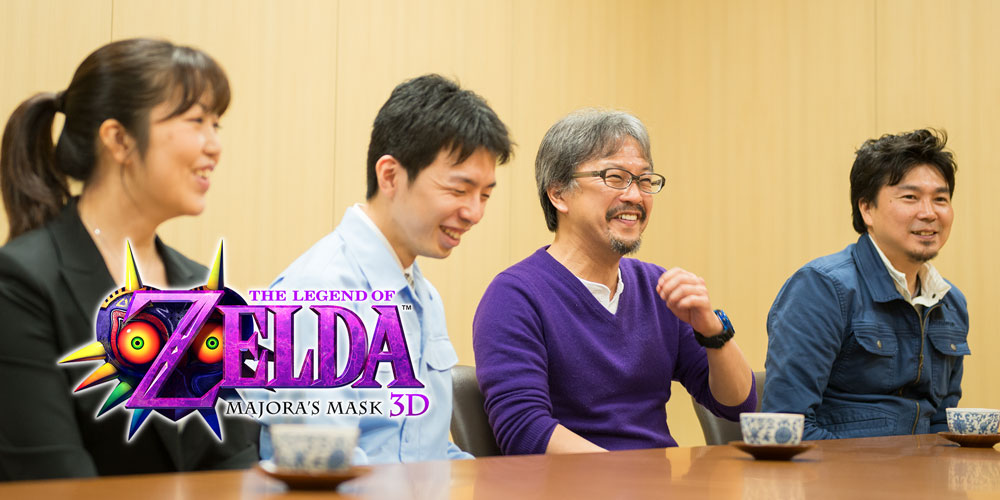
Iwata: We never worked on a remake for Majora’s Mask until now, so we did go in thinking that the reactions would be somewhat positive. But to be honest, the reactions we received were much stronger than we had anticipated. Why do you think that was the case?
Aonuma: I think that’s because Majora’s Mask is the kind of game that presents players with a challenge.
Advertisement
Iwata: What? It’s a challenge to our customers? (laughs)
Aonuma: When we talked about The Legend of Zelda: Ocarina of Time in a previous Iwata Asks, we talked about hospitality… but Majora’s Mask isn’t like that. It’s all a challenge to our players. It’s like we’re saying to them “can you clear this?”
Iwata: It shifted from hospitality to a challenge.
Aonuma: It was something like until then you were welcomed with open arms being invited to come in, and now you’re being told at the door to go home if you don’t have what it takes! (laughs)
Advertisement
Iwata: That might be true. When I played the game when it came out, it was like the game itself was screaming out to me, questioning me whether I had the dedication to play forward.
Aonuma: That’s because we didn’t put in any kind of elements where we show people how to play this game. The game was made for those who have played Ocarina of Time, so I felt like there wasn’t a need for step-by-step instructions.
Iwata: It was like “clear it if you can”.
Aonuma: So those who have played it still strongly remember how the game felt like it was a challenge…”
Advertisement
– Iwata Asks Majora’s Mask 3D 2. From Hospitality to a Challenge 2015
For the folks who never played Ocarina of Time, Link was a child in the land of Hyrule, blessed with great purpose and guided by a fairy to help Princess Zelda save the kingdom from the lord of evil by collecting spiritual relics and taking a weapon that would transport him seven years into the future to conquer Ganon. When his long coming of age tale was completed, Zelda played one last song on the Ocarina of Time to send Link back to his past so he could regain his lost childhood. However, he would live this life cursed with the consciousness of an adult war hero. His companion fairy Navi, a symbol of that youth he carried with him, leaves in the final shots of the game.
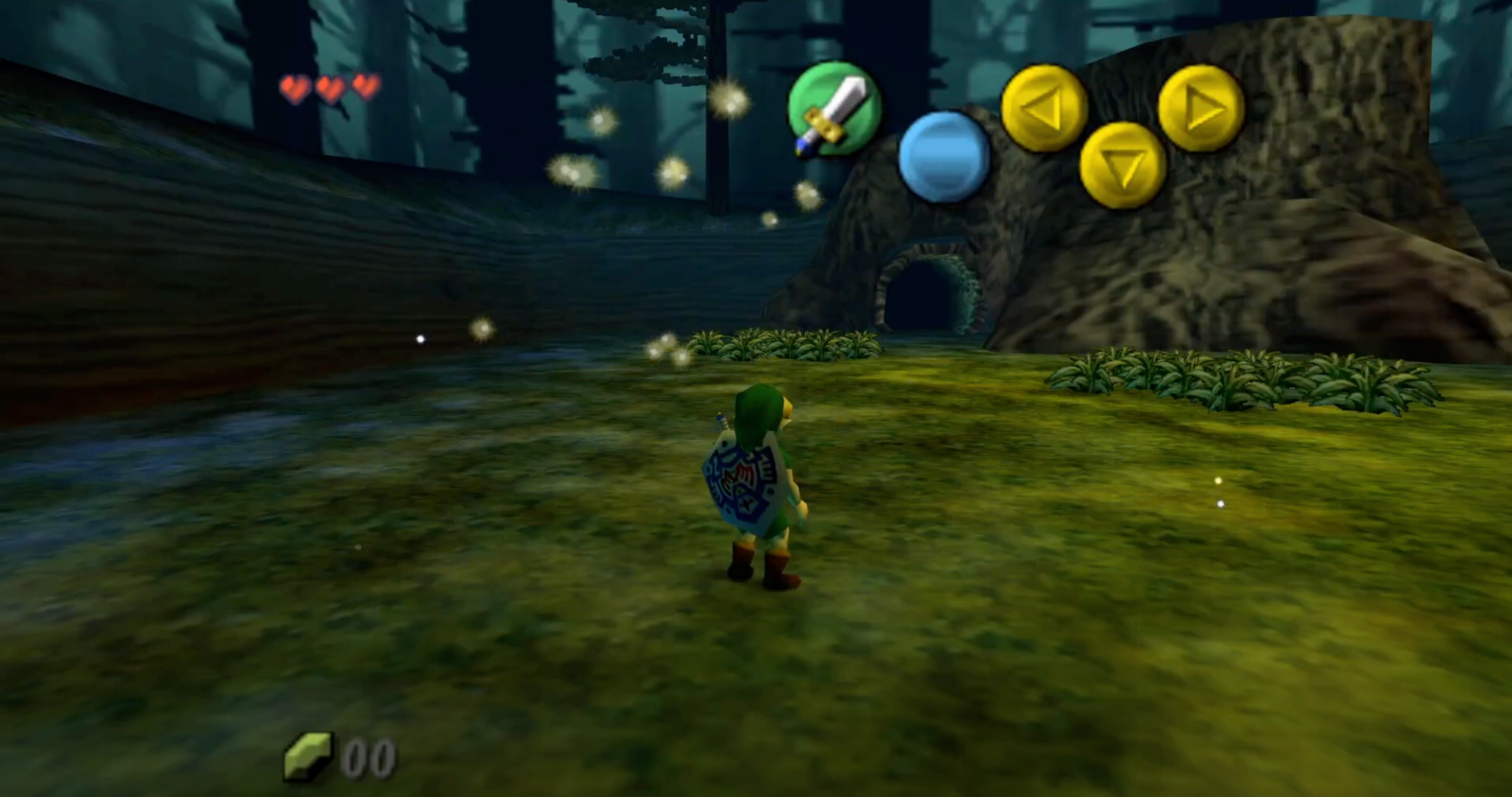
Majora’s Mask dares to ask what happens after this. What happens when a child suddenly thrown into being a time-traveling hero of the goddesses and is thrust back into his old life? Link’s path in this game sees him resisting that flow, as he searches for Navi across unknown worlds to recapture the friend who was alongside him as he literally and emotionally grew up. It’s deep in the woods where he is attacked by Skull Kid wearing the evil Majora’s Mask, after which his horse, his strength, and his weapons are stolen, and he is cursed into a childish Deku Scrub. When Link explores the world of Termina on the other side of the woods, he encounters a town preparing for a Carnival of Time, and a foreboding apocalyptic moon hanging overhead that will collide with the earth in three days. There is a distinct contrast to his heroics in Ocarina when addressed by inhabitants of Clock Town, as though he is a kid with no understanding of how dire the state of the world is. When Link regains his human form, the very song Zelda used to send him back to his past becomes the game’s primary mechanic to save and reset the clock to 72 hours before the moon crashes down. These townspeople, most of whom are familiar faces from his past journey in Hyrule, begin their routine once again, none the wiser. Their set paths are reset and, save for the masks that Link collects as mementos of new friendships, there is no evidence that Link had ever helped them.
Just like much of the game’s music, townsfolk, collectibles, and items, even the masks originated from Ocarina of Time, but much like all the other things carried over, their purpose and power are distorted into something strange. With them followed the Happy Mask Salesman: a foolish yet foreboding harbinger who begs Link to complete his quest in recovering the haunted Majora’s Mask. Aonuma has addressed the masks being carried over from Ocarina to Majora and evolving as a natural necessity with their limitations.
Aonuma: “As a basis of Zelda games, you’re able to use items to do all sorts of different things, and we felt it would be a lot of fun if Link would acquire all these abilities by putting on these different masks. We felt that would expand the gameplay. So we made the game so Link could transform into Deku Link to fly in the air, Goron Link to roll across the land, and Zora Link so that he could swim underwater. We also gave each of them a storyline.”
– Iwata Asks Majora’s Mask 3D 2. From Hospitality to a Challenge 2015
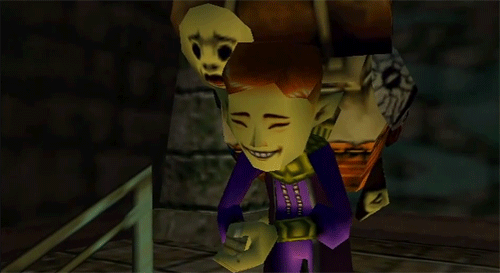
“Whenever there is a meeting, a parting is sure to follow. However, that parting need not last forever… Whether a parting be forever or merely for a short time… That is up to you.”
– The Happy Mask Salesman, Majora’s Mask
Three of the game’s masks are essential transformation totems. Through them, Link embodies the forms of characters who have gone beyond the land of the living. He takes on the form of the Deku Butler’s Son, the Goron’s war hero Darmani and the Zora bands’ lead guitarist Mikau. All three stories filled with themes of regret for what they haven’t been able to do for the people they care about, and on their graves are instructions, leaving behind simple tutorials for players to control their forms through gameplay. Reminiscing the development of Ocarina of Time after spending even more time as a producer on the two games’ remakes than their original Nintendo 64 versions, Aonuma notes regrets of his own as a designer:
Aonuma: …there was a sense of unfulfillment among the staff, where a lot of us wanted to do things differently with certain elements from Ocarina of Time, and also wanting to do things they weren’t able to before. If we gathered all new staff to work on it, it would have been impossible to make it in only one year.
Iwata: You were fueled by your regrets of what you made but weren’t able to fully use to fruition. Because you were fueled by it, you were able to put on a bunch of new ideas on top of the “Three-Days System” and they all fit together nicely. That’s why you were able to make something with so much content in only a year.
Aonuma: I suppose so. Also…I was younger back then.”
– Iwata Asks Majora’s Mask 3D 2. From Hospitality to a Challenge 2015
People have spent years deconstructing the themes of Majora’s story content, but its purpose was to make a new Zelda adventure using all the years of hard work from creating the journey before. While Zelda is known for its many dungeons, Majora only has four. However, the side quests and mini-dungeons before and after them are so complex and rich with character and atmosphere, and all with a distinct style of level design of their own that made exceptional use of 3D space, that their relationship with the temples in Ocarina feels like an evolutionary one. Additionally, the scenarios in Clown Town and its surrounding regions feel like dungeon gauntlets of their own, despite mostly being fetch quests. Combined with four temples that make a step beyond “A Link to the Past with a Z-axis”, and creative use of the space to build a weaving complexity to their labyrinthian layouts, this title would give Zelda it’s greatest content density yet. While it didn’t sell like its predecessor, it made the most of what the Nintendo 64 was capable of, and has become a cult classic ever since; the famous black sheep of the Zelda franchise.
Reinvention
When asked about it while consulting the 3DS remake of Majora’s Mask, Zelda’s director and producer Eiji Aonuma treated the game from 2000 as a frightful memory from much younger days. When giving the remaster team, Grezzo, notes on the work to be done, he would remark on his past choices.
“At the time, I think there was something wrong with me… I knew I didn’t want to open the lid from the get-go, and it turned out that my instincts were correct.”
– Iwata Asks Majora’s Mask 3D 3. The What In The World List
This is typical of a creative mind looking back at work over a decade old, and yet, it’s easy to forget the circumstances under which The Legend of Zelda: Majora’s Mask was created, and it’s a miracle that the game exists as it does. Naturally, a player can see the rough edges from such a limited production time in some of the game’s choices, such as backtracking, repeated tasks for different scenarios, and egregiously using the same Wizrobe mini-boss four times throughout the game. If anything, these faults should make it clear how incredible it is that the best things in the game were made under such limiting circumstances.
It was the terrifying first step Aonuma and his peers would make to use Shigeru Miyamoto’s baby to transform it into something of their own. Twenty years later, that risk of sticking to their instincts still holds for fans and has seen wild success in their careers in the years following the moody little Zelda sequel.
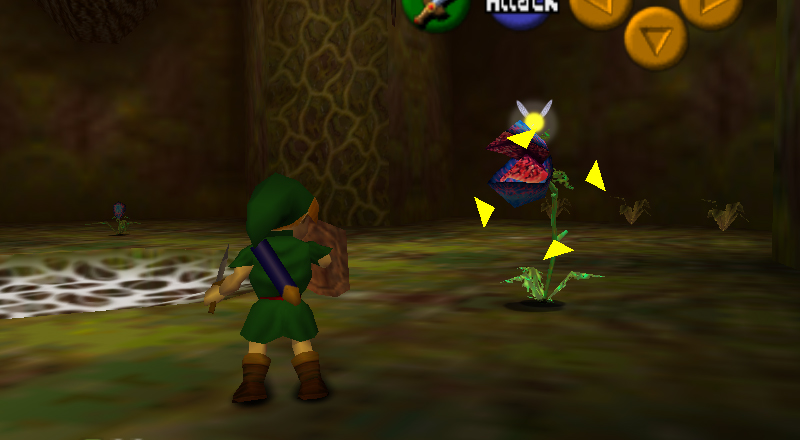
In 2020, we take for granted that video games evoke themes beyond the routine of players reflexively tapping buttons. Once upon a time, it was a marvel to simply see 3-D games like Super Mario 64. So many things that we’ve come to take for granted in modern video games had been established rapidly over a small amount of time in the late 1990s. When games took their first steps into 3-D, they were at first mere expansions on the design fundamentals of 2-D games with an added axis. It was games like Carmack and Romero’s Doom and Miyamoto’s experimenting with the Super FX chip and StarFox on SNES that would lay the groundwork for 3-D perspectives as a fundamental component of traversing labyrinthian level design and combat navigation well before the Nintendo 64 and the PlayStation ever hit the market. This is essential to clarify because it’s often easy to forget how revolutionary it felt to play The Legend of Zelda: Ocarina of Time, Eiji Aonuma’s first project under a directorial position.
When compared to modern action-adventure RPGs, Ocarina hasn’t aged the greatest. However, the first 3-D Zelda adventure brought with it a substantial upgrade to the world and dungeon layouts blueprinted by A Link to The Past in 1991. Ocarina of Time provided just as many rich and densely populated open spaces to explore as it did tight corridors with obstacles. Although the dungeons often reflected ALttP’s map layout, awareness puzzles, switch and block puzzles, and similarly moving enemy varieties, exploring all these components on a Z-axis brought new life to their usefulness. Combined with this depth was a mechanic just for navigating combat in these new spaces, Z Targeting, what we now fundamentally understand as a lock-on system. It was used for battle engagement, turning the slashing your sword into a rhythmic bout with enemies, an idea brought on board by Super Mario 64’s Assistant Director, Yoshiaki Koizumi. He revealed in a 2011 Iwata Asks interview that the concept came one summer from seeing a circular battle choreography in a ninja and samurai showdown at Toei Kyoto Studio Park. This ended up setting the standard for the majority of action-based gameplay to this day and demonstrated the innovative skills of Koizumi and Nintendo’s staff as they began reworking their franchises and wild new ideas into 3-D.
“I was a designer, so I didn’t want to use such a simple marker. I wanted to make something else, so I came up with a fairy. After all, it was The Legend of Zelda.”
Yoshiaki Koizumi, 2011 Iwata Asks 4 Where The Name Navi Comes From
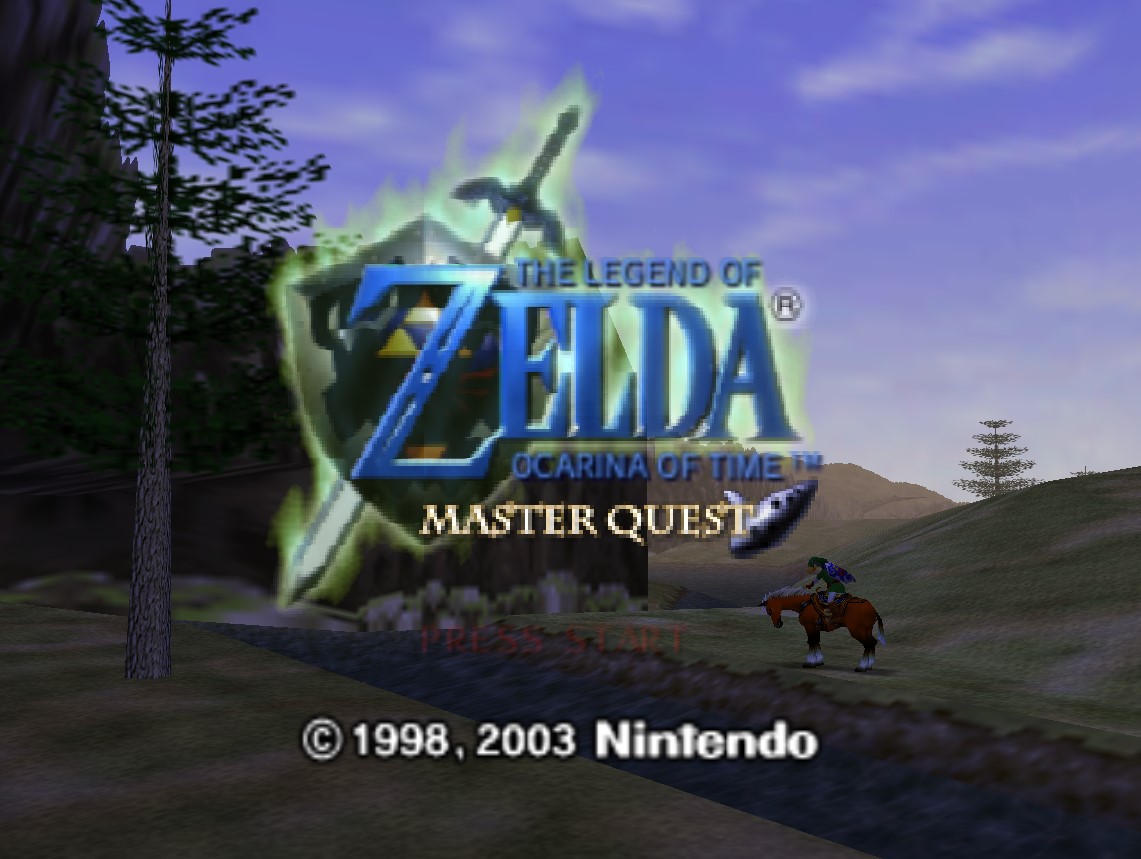
Dawn of A New Day
The sometimes overlooked Master Quest expansion disc for the Nintendo 64DD was released as a GameCube port for Wind Waker pre-orders in the west and was an important stepping stone following the explosive success of Ocarina of Time. With that release came a completely redesigned dungeon layout to provide more of a puzzling and combative challenge; an immense paradigm shift for players who knew the game’s dungeon layout. Master Quest often asks players to rethink how to solve puzzles entirely, using all the same room layouts and item acquisitions but with a higher density of foes, alternate paths, and unique physics not often asked of people in the base game. Eiji Aonuma, who had his first directorial experience alongside Miyamoto on Ocarina of Time, wanted to force the series staple to evolve.
The Master Quest expansion paved the way for Zelda Team’s next task. Fans often recall the story of “Ocarina of Time Second Quest,” or “Zelda Gaiden,” and how that turned into an entirely new game in Majora based on an argument between series pioneer Shigeru Miyamoto and Aonuma, who would be tasked with directing alone this time around. For years, even Iwata didn’t know of this origin story, but this infamous gamble of a deadline to make an entirely new Zelda title would work its way into the game’s core mechanic and shaped how iterative game design would be seen forever: The game would be a standalone release, using the assets, engine and audiovisual leftover from Ocarina, and they had one year to do it.
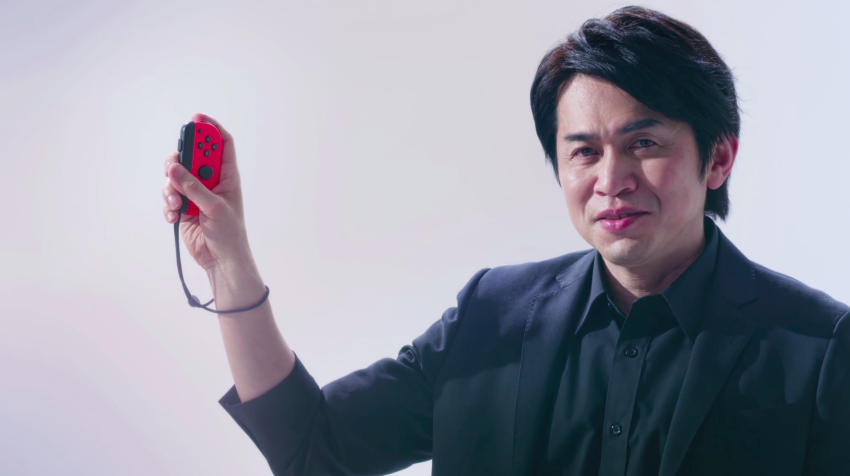
The Nintendo 64 marked the beginning of the company no longer having complete domination over the industry as Sega was still in the race, Sony was about to launch its hotly anticipated PlayStation 2, and Microsoft was entering the ring to release the Xbox. This second Zelda for the Nintendo 64 had a lot riding on it now that Ocarina had placed Zelda firmly as a top priority for Nintendo, and as Satoru Iwata was moving up the ranks to the role of president, Miyamoto would also be taking a step back directly designing games for the first time in his beloved fantasy franchise. Aonuma and Koizumi had a lot of pressure on them but shared enough experience between themselves and the rest of the Zelda Team to get Majora completed on time. The task would force Aonuma to work closely with the team he already had on the previous title to get the work done efficiently, but that still carried great weight, even in his dreams.
Aonuma: I had a dream about it.
Iwata: What kind of a dream was it?
Aonuma: It was a dream about being chased by a Deku.
Iwata: Oh, a dream where you were being chased around? (laughs)
Aonuma: I was thinking about an event for the Deku, and have been trying to figure out what to do with it. I thought of it at home, and Dekus appeared in my dream. I woke up screaming! I went to work the next day and that’s when (Takumi) Kawagoe-san [Cinematics Designer] told me that he finished making a movie for the Dekus, so I had him show it to me….and that movie was exactly like my dream!
Iwata: (laughs)
Aonuma: I even told him “how do you know my dream?” (laughs) That’s how put up against the edge I was back then.
Iwata: Perhaps you were possessed by something.
Aonuma: Possibly.”
– Iwata Asks Majora’s Mask 3D 2. From Hospitality to a Challenge
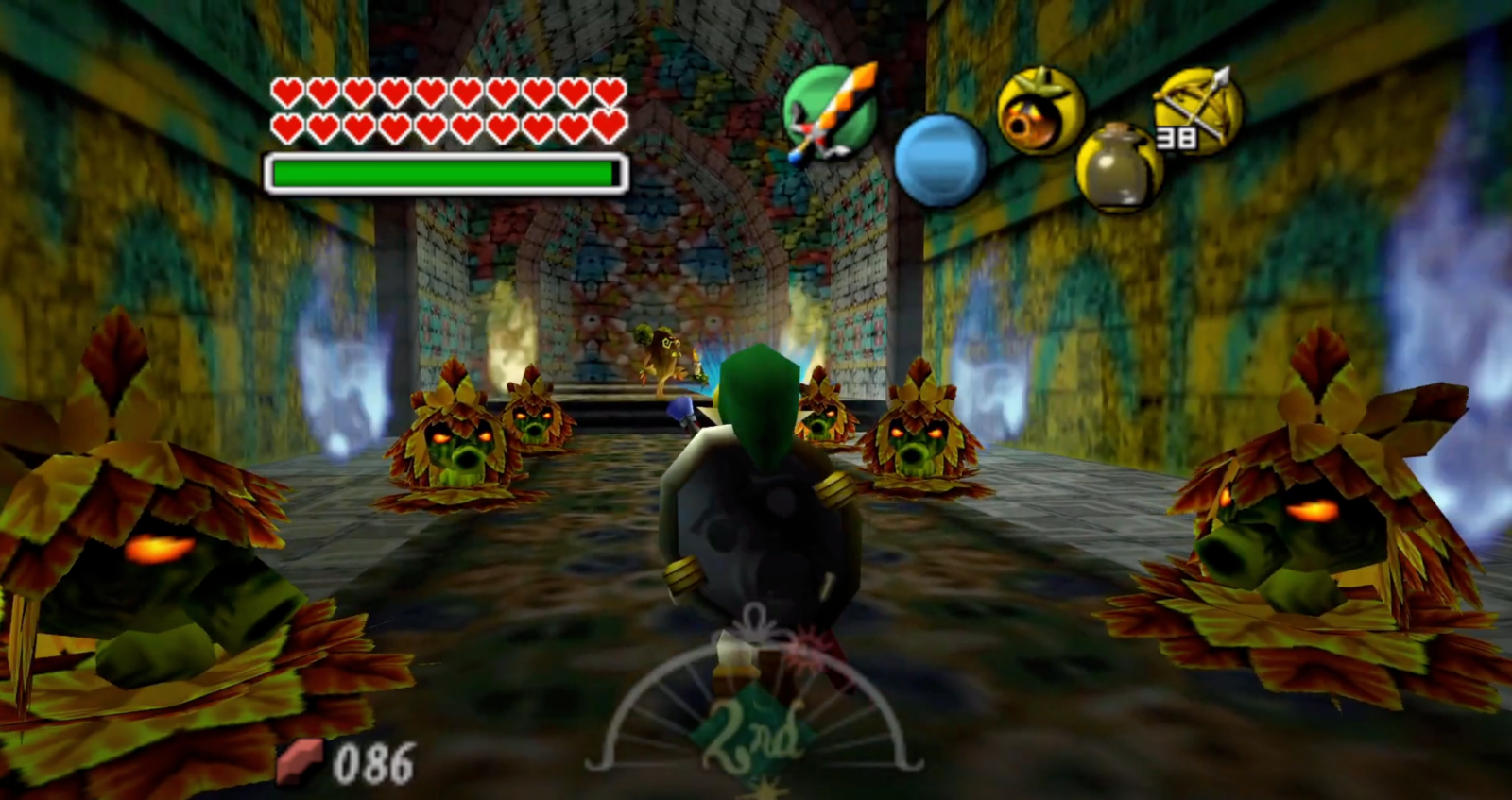
Aonuma, who was new to video games when hired by Nintendo in the late 1980s had researched different genres and found himself engaging with text-based adventures and puzzle games early in his career. So it came as no surprise that his work on Ocarina under Myamoto’s direction would result in some of the most story-driven games to date, and the most iconic RPG dungeons in gaming history, particularly and perhaps most notoriously, the Water Temple. Therefore, while Master Quest is a fascinating experiment, it made sense that he would want to stretch the boundaries of what they could do with Zelda. Thankfully, after a plea for help, Aonuma found a co-director in Yoshiaki Koizumi, the story architect of A Link to the Past, Assistant Director on Super Mario 64, and one of those innovators of Z-Targeting in Ocarina. This pairing was pivotal because these two creators were operating in a wildly uncertain era of Nintendo’s history, and the sands of time were shifting around them when the industry and the company were changing.
Aonuma: “Even when I was making The Legend of Zelda: Ocarina of Time, I was still designing different kinds of demo movies and was working on the fieldwork at the end. In the next work, The Legend of Zelda: Majora’s Mask, I was going to be in charge of designing the dungeons, but somehow, I became the director. I felt anxious about being the only director, so I called in Yoshiaki Koizumi, who was the 3D director for Ocarina… When I asked him to join us, he said, “I’d go only if you let me do whatever I want to do.” And the result was the “Three-Day System.”
https://news.denfaminicogamer.jp/english/170609b/4
The Power To Turn Back Time
The unique design and directing styles of these two creators would come to fruition during Majora’s production; Aonuma’s efforts and passions would result in four of the franchise’s most puzzling and thematically unique dungeons to date for the series. Koizumi, on the other hand, focused on the design of the layout, characters, and quests inside of Clock Town: the hub at the center of the game’s map. These innovations came after coming up with the mechanic to build a restrictive time loop as a core function of the game; an idea that came to him after seeing the film Run Lola Run from 1998, and spun from his attempt at building a Cops and Robbers concept with interweaving schedule mechanics. This became the Three-Day Cycle, along with tracking the people of Termina in the Bomber’s Notebook, would take the puzzle fundamentals of Zelda’s dungeons, and inject them into conversational text quests which weaved simultaneously with the game’s larger narrative.
“Do you want to play with me? OK, let’s play good guys against bad guys… I’ll be the good guy, and you be the bad guy, and when you’re the bad guy, you just run.”
The Final Moon Child, Majora’s Mask
Time loops worked to Aonuma and Koizumi’s advantage when making Majora in such a small amount of time. Game designers program spaces with selectively few characters, music, weather conditions, paths, and dialogue, in a way that is limiting what the player can experience while keeping those limits invisible to the player. Majora’s Mask manages to use those limitations to its advantage. While Termina’s map was significantly smaller than Ocarina’s Hyrule, its regions would have a variety of states depending on when the player arrives or if it’s in a poisoned or restored state. Additionally, the characters’ behaviors change based on their schedule. The result is a lived-in quality for a lean, richly populated environment, incentivizing players to do every side quest they can manage to reap the rewards in the form of masks, tools, and pieces of heart.
The game functions uniquely by having characters with a finite routine, and are expected to do so as the players experience the same three days over and over again in their task to stop Skull Kid from crashing the moon down upon them. On the first day, people mind their own business about town. On the second day, they begin to grow dreadful, angry, and divided as the moon lurches closer to the earth. On the third day, people flee, hide, become fearful, regretful, or mourning events that had no savior. Unless Link interferes in time, they meet their demise and the clock resets.
Thanks to his Ocarina, Link has the power to turn back time in the game, but it comes at a cost. Majora’s Mask, whether intentionally or accidentally, deconstructs the heroism of Link. He begins the game clinging to his past after he’s been through hell and back to defeat Ganon, searching for his childhood companion, Navi. He instead meets a fairy who is the opposite of her in Tattle, who is brash, stubborn, and a little nihilistic. However, their goals are similar as she is separated from her dear brother Tale. Stripped of his humanity and locked in a strange nexus of the universe, Link is surrounded by familiar circumstances, faces, and goals, but all with a nightmarish quality cycling itself in a veil of dream logic.
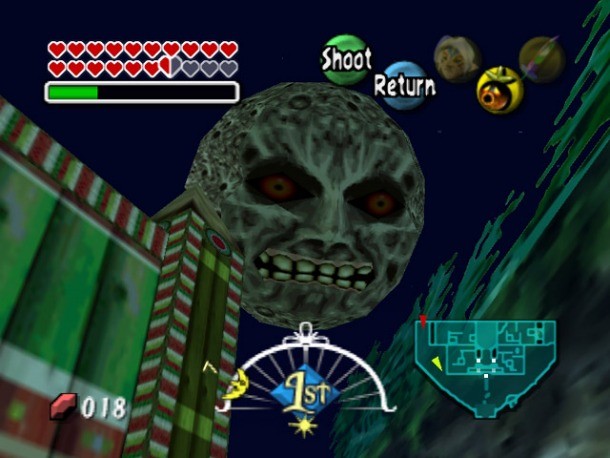
With only three days to save everyone from a brutal end and a garish moon constantly threatening to obliterate the world, Link is forced to run around doing errands and getting to know characters in Clock Town and Termina. Sometimes the tasks are big, like restoring a poisoned swamp or saving a mountain from an eternal winter, but others are as simple as reuniting a married couple, listening to a long story, or passing on a dancer’s dream to a new generation. Link is a conduit for the people who are suffering a loss or are close to death and regretting things in their lives. Even if he needs to reset the clock and restore everyone to their miserable state on the first day, he carries totems signifying their memory in the form of collectible masks.
By reusing characters, items, music, and sounds, with a purposefully restrictive mechanic, Majora’s Mask shows a dense complexity with a meaningful, thematic purpose to every side quest, and many of them come with interlinked consequences over the three days. As a result, the themes of selfless heroism and grief routinely find a way of growing beyond what the characters say, and change is made out of what the player does to catalyze the character’s routine. As a result, the people you see on screen become more than NPCs and are suddenly characters playing their role in the story, and the items you collect suddenly have more meaning.
A key example of this is best demonstrated in a secondary character, a young red-haired woman named Anju. When you meet her in Ocarina of Time, she stands beside a chicken pen in a small village and asks you to gather her Cuccos for her. When you return the chickens, she gifts you a bottle, and then that’s it, her role is fulfilled.
When you meet her doppelganger in Majora’s Mask, however, she is the clerk of a hotel. She is worried about her fiance who has gone missing three days before their wedding and Link can follow her, discovering her relationship with her mother and other patrons and is sometimes rewarded for doing so. Alternatively, Link can knowingly manipulate events he knows will happen to learn more about her, and when he does, the routines of many people will be disrupted as a result. This weaving complexity combines both the charming writing and puzzle-solving of Aonuma’s designs and Koizumi’s unconventional event design into a marriage of sorts. The Anji and Kafei quest in particular ends as they reunite at the eleventh hour while the moon falls and gift a mask to Link as their witness in matrimony. Aonuma once recalled them having particular anxiety over a Taepodong missile crisis coming from North Korea:
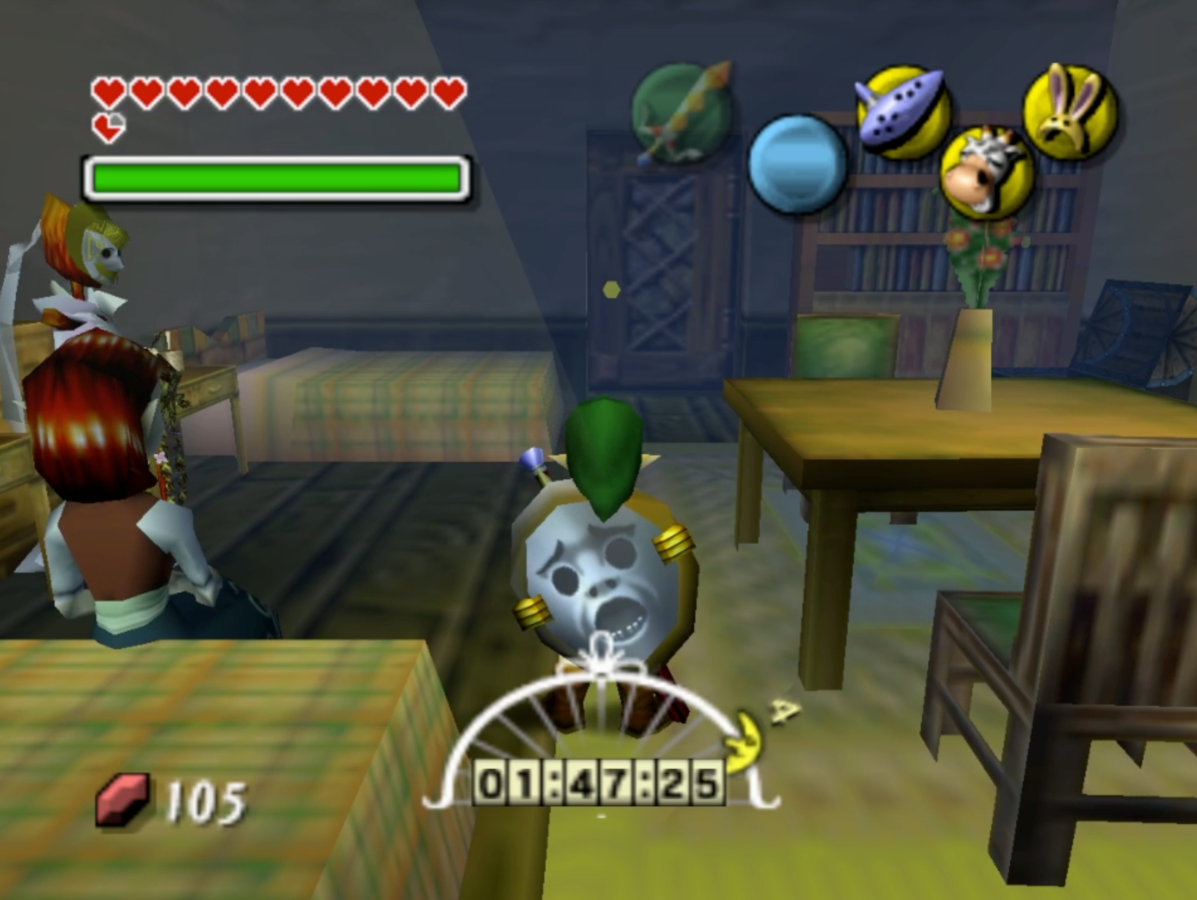
Aonuma: We were attending a wedding of a staff member and were talking with Koizumi and the others: “Come to think of it, it’s somewhat strange to come to a wedding in a situation when missiles may fall down today.” The discussion progressed into noting how it would also fit the setting of a falling moon and whether to do a wedding in the game. Now that I think of it, no matter where we go, we always talk about work (laughs). However, I didn’t mind it at the time!”
Aonuma would reminisce much later in an interview on Majora’s Mask as his favorite game in the franchise, in large part due to his love for the Couples Mask quest alone.
“…The scene was based on my generation’s perception of marriage but was meant to be solved at the end to make the players feel dramatic. So the waiting process was put in intentionally. We dragged [it out] till the very end.”
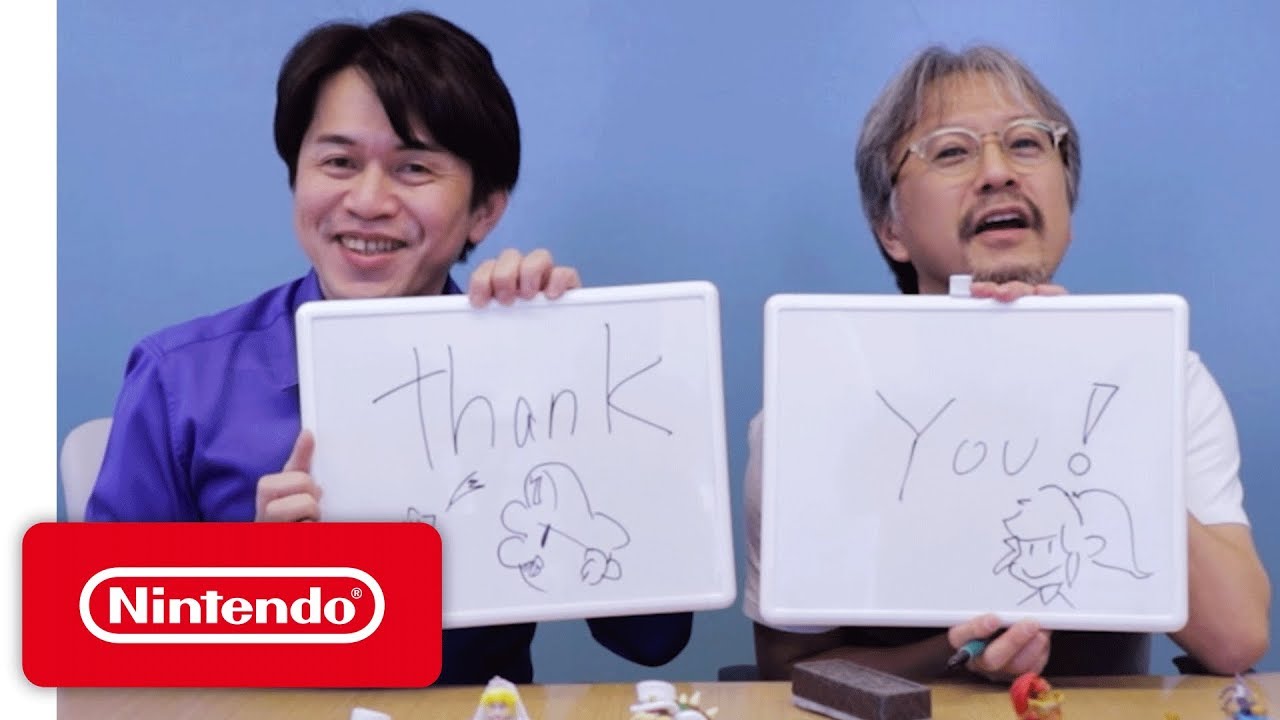
Game designers often strive for players empathizing with main characters and NPCs are the afterthought, and yet Majora’s Masks’ secondary characters drive the heart of the story tangential to Link’s quest. The rewards resulting from these specially crafted diversions come in the form of 25 collectible masks. These quests can be introspective personal problems or monstrous external threats, and yet they all have emotional weight. Link can make a very distinct impact on most of the townsfolk’s lives, at least to the best of his ability. A player feels the same pressure of the clock as Link, and make the conscious choice of hitting reset themselves. Many over the years have attempted to save every character before the moon crashes by strategizing tasks and optimizing time. Of course, it’s not possible by design. No one is perfect, we can’t predict the future, and the flow of time is unrelenting. Even though many of the masks have only a couple of use cases in gameplay, they are often pivotal to changing the fate of another character, with Link as the conduit. It is a tone that resonates with the humanity in the players, but often overlooked is it’s clashing and emulsifying of tones and ideas, as demonstrated in this interview between Aonuma, Koizumi, and Miyamoto in 2012:
Aonuma: To put it simply, I was responsible for the fairy-tale sections, and Koizumi was responsible for creating realistic depictions of the lives of the townspeople. I tried to emulate the fantasy atmosphere we had in Ocarina of Time…
Koizumi: And I created realistic lives for the characters.
Aonuma: You could say that Koizumi slapped his worldview on the whole thing. [Laughs]
Koizumi: I put in everything I’ve seen in my 30-something years on this earth.
Miyamoto: It’s a very serious game. [Laughs]
Koizumi: Aonuma was in charge of the outdoors, and when he saw how serious my town was, he made his areas of the game more light-hearted.
Glitterberri 2012 – Zelda is Always Bringing Something New To the Table
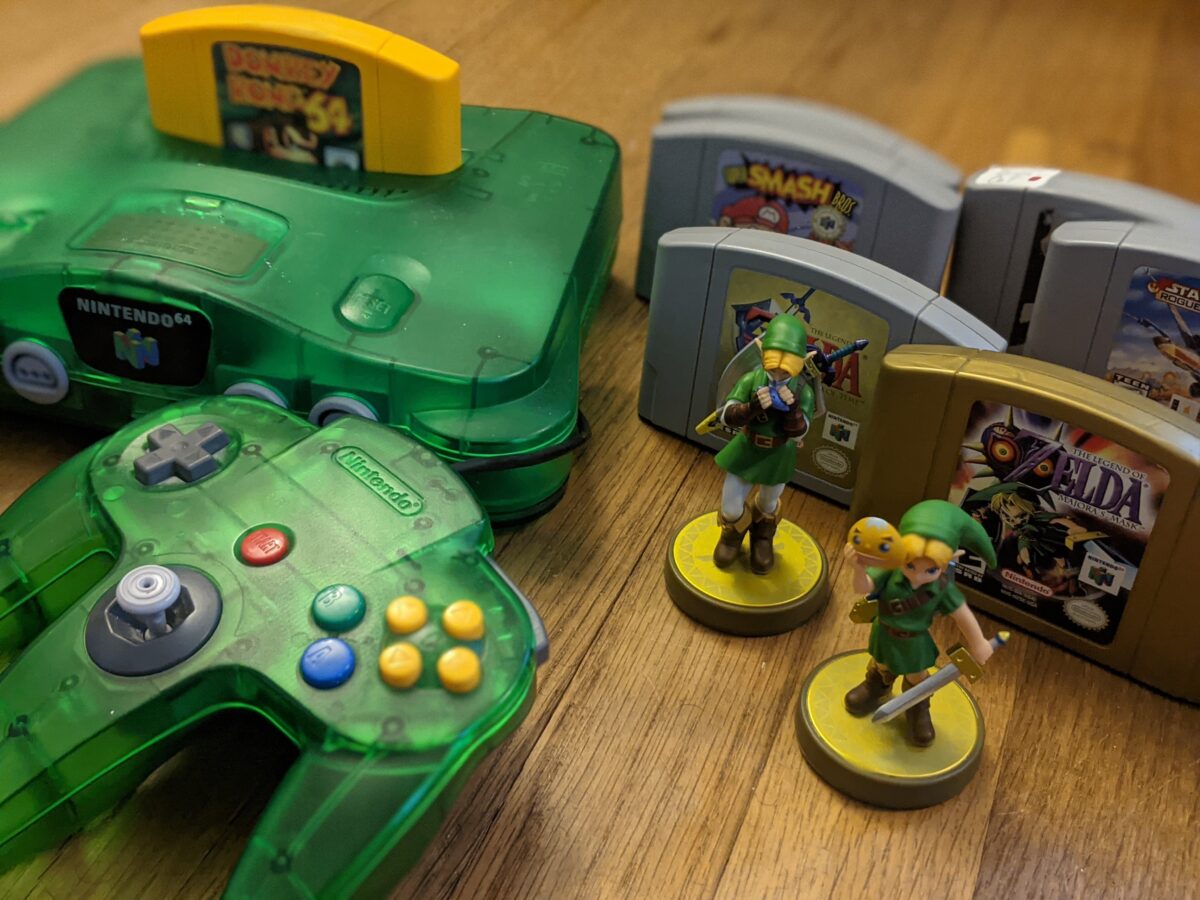
The Fog of the Future
Of course, Aonuma and Koizumi were simply keeping their heads down and grinding their way to the finish line, unable to know that their efforts would see them as the lead directors of Nintendo’s two biggest franchises in the years to come, and as Majora’s Mask was the platform they first stepped upon to prove themselves, seeds of this game could be seen throughout Nintendo’s library of first-party titles even to this day.
The two would work together on the controversial The Legend of Zelda: The Wind Waker on the GameCube, achieving a timeless cel-shaded look that puts aging, sensitive fans on the defense as the franchise leaned a little more appealing to children. Koizumi would take his wild ideas and give us a water jetpack in Super Mario Sunshine, repurpose the DK Bongos into an action platformer with Donkey Kong Jungle Beat, and has constantly reinvented Super Mario with installments like Galaxy, 3-D Land, and Odyssey, all with the wild level design density and unique mechanical upending that he’s demonstrated throughout his career at Nintendo, few more iconic than the Three Day Cycle in Majora’s Mask.
Aonuma, following the release of Majora’s Mask, would continue being the producer at the head of the Zelda ship, and while he would leave his love for puzzles and text-based adventures scattered throughout, what he loves in the series often clashed with the status of other popular video games like oil and water. On the eve of the Switch and Breath of the Wild launching, an interview with Gameinformer asked him to name his favorite three games in the series. Ocarina, for the chance to build in 3-D, Twilight Princess to supersede Ocarina, and controversially names Phantom Hourglass and Tri Force Heroes for new styles of gameplay, and his wife’s enjoyment of them.
His design fundamentals come from a place of building, and it comes as no surprise that his love for making games comes from a desire to upend convention, always looking to reinvent what a Zelda game is at every chance he gets. When he first started playing games, he didn’t even care for the original Zelda all that much because he found he was bad at fast, twitchy combat. Naturally, under his supervision, combat became more of a puzzle-solving scenario.
But it is in Breath of the Wild that his desire to reinvent Zelda met with the needs of its audience, as the most successful game in the series to date, and also the one he had the most fun producing:
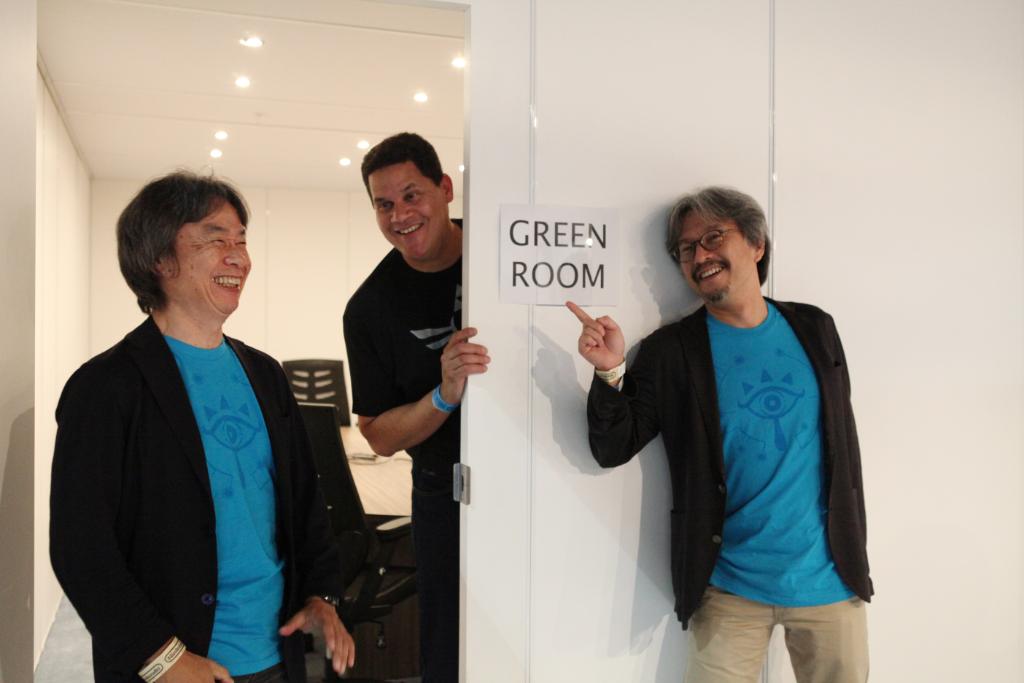
“…I’ve been making Zelda titles for almost my entire career, and the memories start to pile up. I start to forget things, but I think one thing I’ve always been proud of is the fact that Zelda games have always been about new surprises and thinking about different things to try, yet still maintain that Zeldaness, or whatever it is.
…Breath of the Wild, it was really fun to develop – maybe the most fun I’ve ever had making a game. It was because of the staff. They took so much initiative and were always looking at everything in the game with this eye to improve… I could see it every day. As a producer, it gave me a lot of courage…”
For Aonuma, his continued work and the way he speaks demonstrates that no matter how big The Legend of Zelda gets, he’s always looking to change it, and always keeps it very personally close to his heart.
It is because Aonuma and Koizumi stayed true to their passion for directing that Majora’s Mask is the way it is, and seeing the game that way makes it feel even more alive than it did before. The success and life long fans created of this game speak to people because it was a product, as many sequels are, to appease a corporate need for sales after a resounding success. Majora’s Mask exists despite that. The spark that created Majora’s Mask the way it existed at that moment is hard to pinpoint, even to the degree that Aonuma and his staff agree that the game was incomparable to others at the time, and in the 20 years since.
Aonuma: “I heard that hardcore players love The Legend of Zelda: Majora’s Mask more, so it’s kind of ironic for me. To be honest with you, I could only get approval for development because I made a game of that size [of Ocarina] back then. If you ask me [to make] that kind of game again, I can’t do it.”
https://news.denfaminicogamer.jp/english/170609b/4 June 2017
Part of that spark may have been the uncertain energy in the company at the time or cultivating talent in the young staff, but Majora’s Mask is the only instance a full adventure was allowed to be made out of the assets already built for a Zelda game. For a couple of years, a sequel to Wind Waker was being planned for GameCube, and because of the low enthusiasm from the fanbase on the game at the time, the plans shifted to creating the more realistic Twilight Princess. Similarly. Aonuma and Zelda team desperately wanted to create a proper direct sequel adventure in Twilight Princess’ engine as well and were unable due to strict instruction from Shigeru Miyamoto to make it a Wii Zapper tie in with no story and barely any boss fights. Of course, that game became Link’s Crossbow Training. The opportunity for a direct sequel to a Zelda game of Majora’s ilk has yet to turn up. It hasn’t been until now, after the success of Breath of the Wild, that the Zelda team has been able to use their hard work rebuilding a Legend of Zelda engine from scratch for one extra game to tell a complex, moody adventure with the current unnamed sequel, whose single teaser trailer has fans reminiscing their love of Majora 20 years later. Whether that game will get to be anything like it is yet to be discovered.
Majora’s Mask’s legacy has left a great impact over the years because of its tone, its themes, and its unique nature apart from its sister software in the Zelda franchise. However, it’s spirit is carried in small details throughout Aonuma and Koizumi’s careers. It is a game that is more personal to the fundamentals of these two men’s passion for designing games, but also, in a stressful and uncertain time, they managed to turn it into a work of art by injecting it with their personalities, and their fears. While so many players over the years connect with Majora for its atmosphere, performing countless autopsies to pull deeper meaning, Nintendo’s productions always have a mystique about them, and the game spoke for itself. Now, when coming away with an understanding of their artistic flourishes, it feels human in the way it presents its world to players: Despair, grief, pain, sorrow, salvation, legacy, and hope. Link entered Termina looking for one friend and, provided it exists in some semblance of reality, departed with many. Link sees a bit of himself in every individual who gifts him a mask throughout this journey, and in turn, that allows the game’s architects to convey their experiences and musings to the player. The humanity of Majora’s strange world just might be something that causes it to overshadow even Ocarina of Time’s revolutionary status the further we get from its release, but only time will tell.
Advertisement







